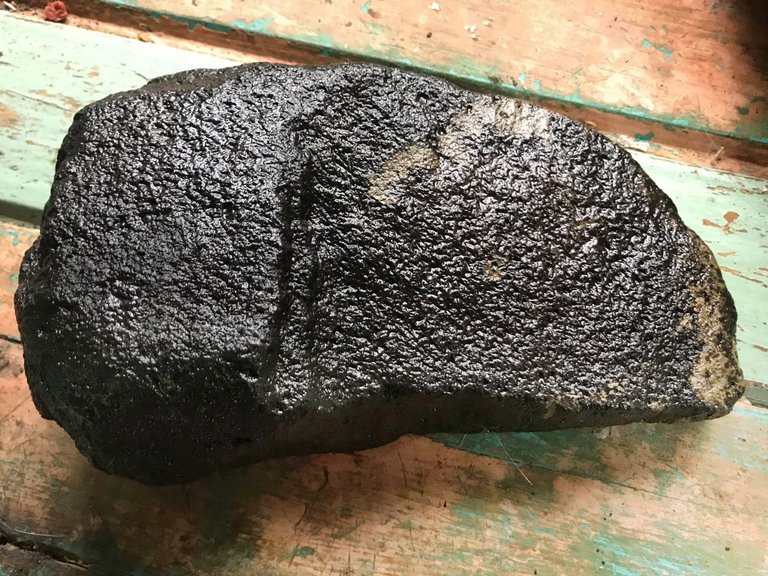
It's clearly an axehead, clearly shows signs of being shaped and worked by other stone tools. Its sharpened edges have been worn down by time, but there's no doubt about it: human hands crafted this piece of rock into something for use in everyday stone age life.
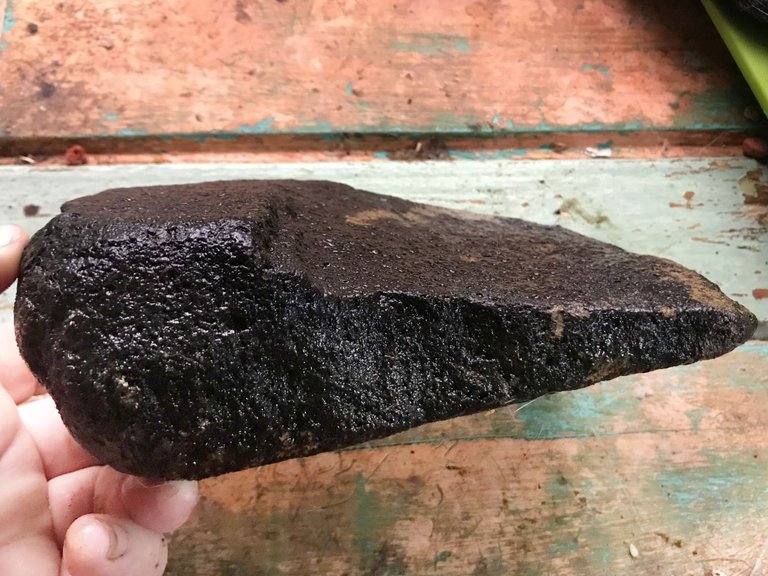
I say "stone age," but we really have no way to know. Mesoamerican culture isn't as clearly defined this far south on the Central American isthmus. No known historic settlements here were definitively Aztec, and no settlements here were definitively South American. Instead, there seems to be influence of both, a cultural blend that could date back as far as 20,000 B.C.
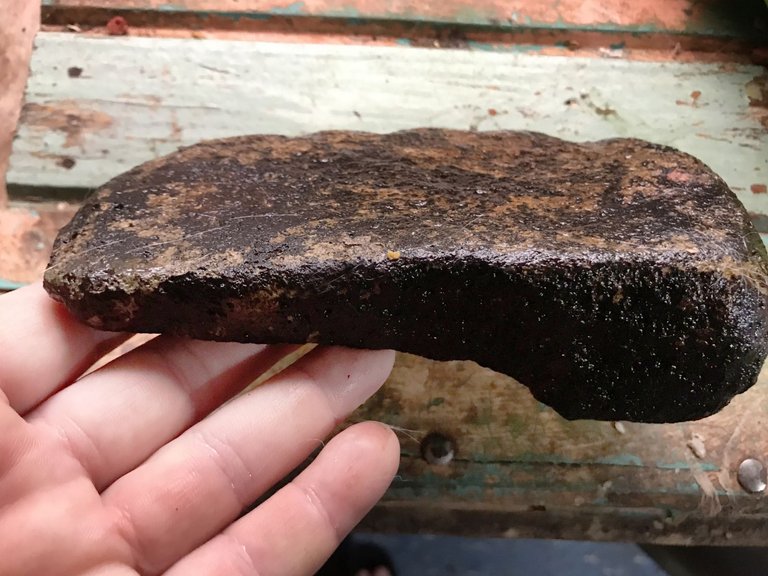
What I do know without question is that humans lived here long before Costa Rica became a nation. They left behind subtle clues and scattered evidence of their life here among the volcanos. Below is a metate, or stone for grinding. The rounded hollow in the middle came from years of food preparation, the slow and careful process of turning whatever grain they harvested into meal.
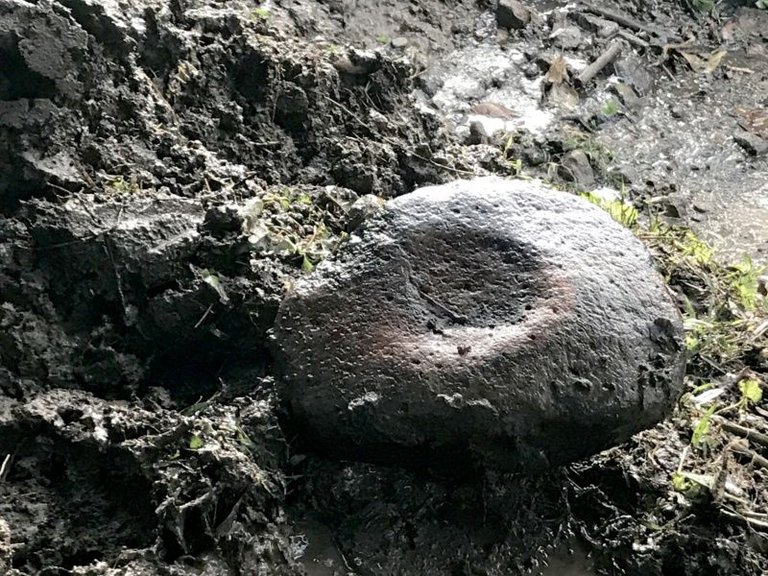
This is a large stone, bigger than might be assumed from the photograph. For reference, the hollowed place at the center is larger than the palm of my hand.
In our region of Costa Rica, volcanic rock is pervasive. We don't see any obsidian, though, and very little flint. Stone material is invariably porous and gritty, and it probably did not make the best tools. But people tend to use what they have at hand. Scientists have not done in-depth studies of prehistory in my area, but ancient civilizations here were nomadic, so it would make sense that we would find some trace of them here on our farm.
More questionable, in my opinion, is the small handheld scraper that we found in the same location as the axehead and metate. Like the axehead, its sharp edges have been worn down, but to my eye it still bears the evidence of tool marks. But is it really a scraper? That's hard for me to know.
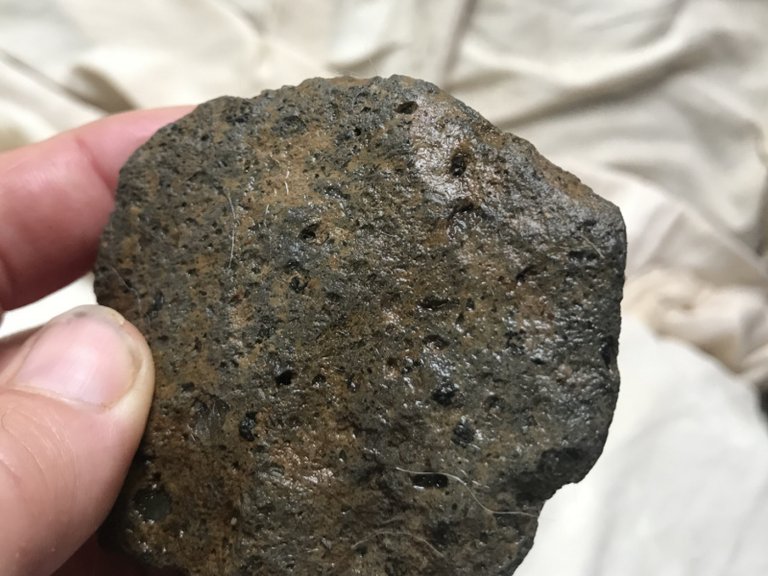
I compared this shaped stone to images of tools that have been confirmed by experts. I see no reason to doubt that this was once used as a small blade to deflesh bone for meat or to prepare animal hides for use.
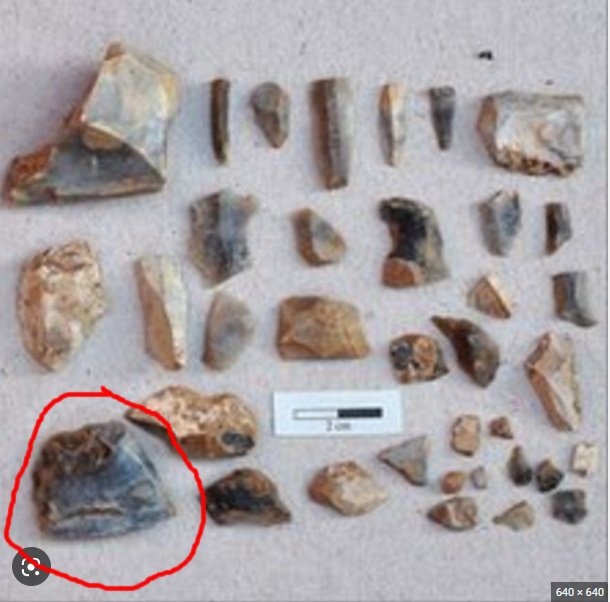
All of the stone tools pictured in my original photographs were found in the same stream bed, at approximately the same depth. In other words, they were stratified. We were digging down to make a small pond and they were so distinctly different in composition and shape from the native stone that we couldn't help but notice them. All three of them were found at the location pictured in the photograph below, at a depth of approximately one meter below ground level. This small quebrada is a year-round water source that probably existed as a natural spring in prehistory. These artifacts were discovered below the road grade and well away from any digging that might have been done for the culvert installation. We believe they were in situ, exactly where they'd been lost or forgotten all those thousands of years ago.
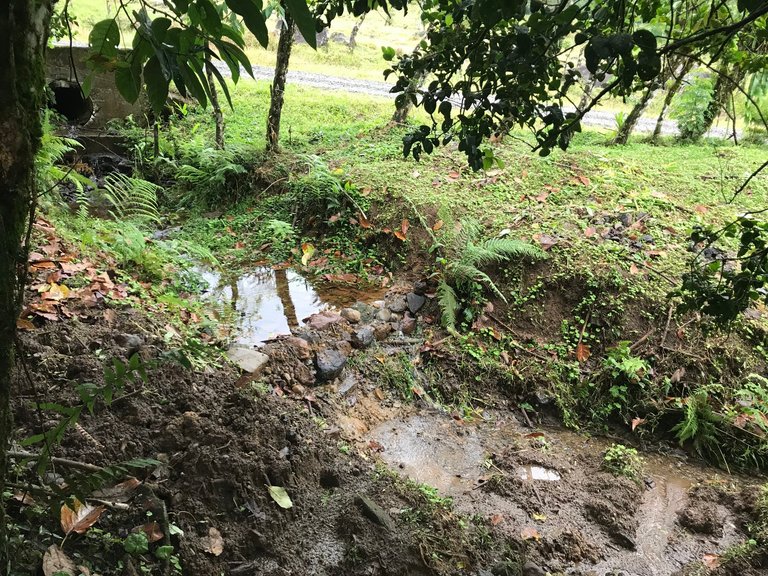
Haaaaha!